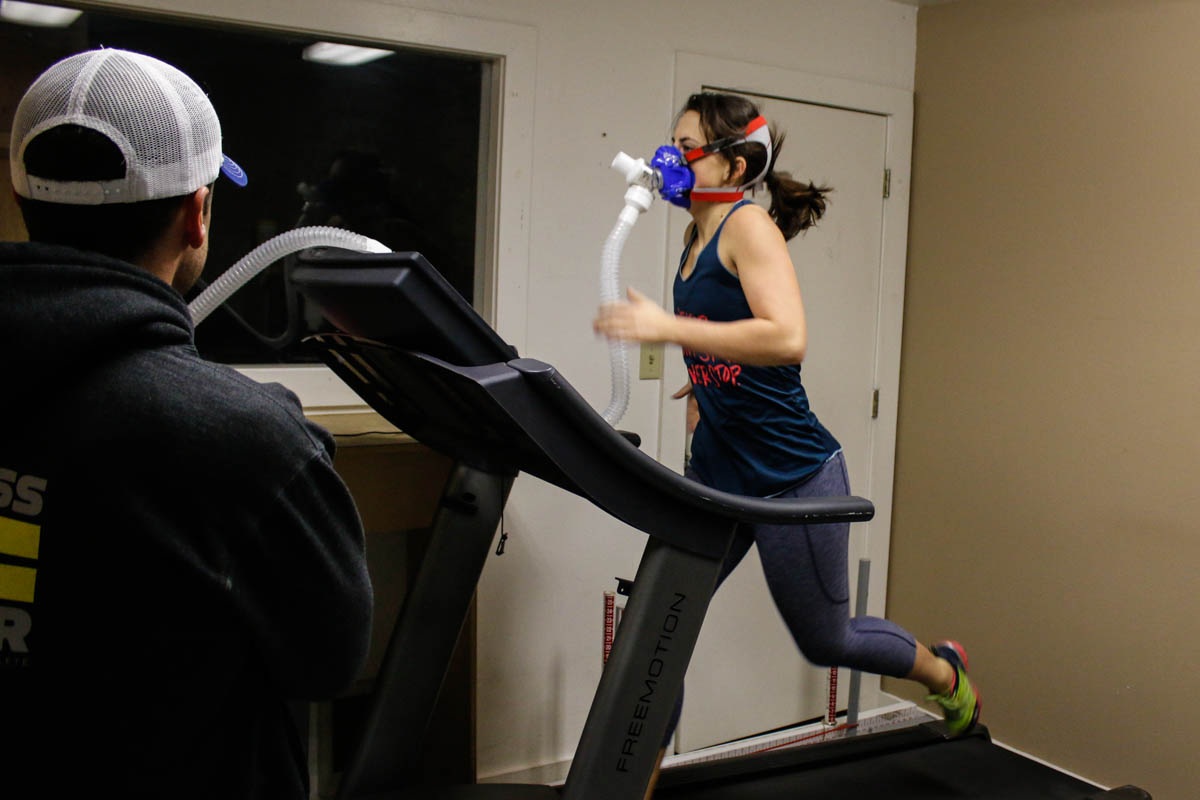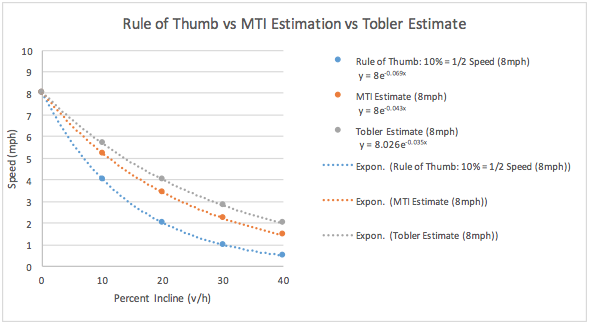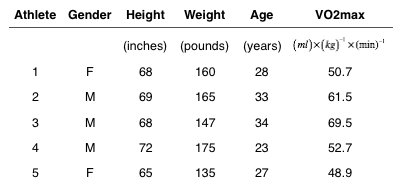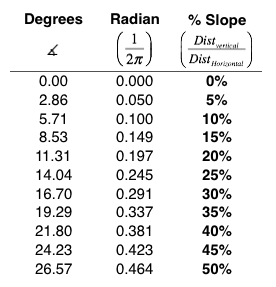
By Adam Scott, MS, CSCS
A couple of years ago we published our Five Rules of Rucking. The article has been one of our most cited and reproduced works – appearing on, among other things, Backpacker Online.
Although the rules were based on previous academic findings we were never quite comfortable with the results. So, as we continue to develop our route card planning tool we thought it would be interesting to test those five rules.
The first rule we tackled was: A 10% grade incline cuts your speed in half.
DESIGN
To test the rule we developed a simple experiment. We took five of our mountain lab rats and put them through a simple treadmill test (we had more scheduled, but we broke our treadmill…oh well)*.
Step 1: Based on the athlete’s previous VO2max tests we established a horizontal speed which equated to roughly 80-85% of their VO2max speed (7.2mph to 9.8 mph).
Step 2: Each athlete completed a 4-minute time trail at their assigned speed with a 0% incline. During the trial we collected their VO2, HR, Rate of Perceived Exertion (RPE), Speed and Incline.
Step 3: After a 4-minute recovery period each athlete then completed four additional 4-minute trials (all separated by a 4-minute recovery). The four trials were completed in random order at inclines of 10%, 20%, 30% and 40% (**).
Step 4: Since the athlete’s HRs were roughly the same at each incline we were able to compare their speeds to determine the effect that incline has on velocity.
RESULTS AND DISCUSSIONS
Our study showed that incline’s effect on speed was not quite as dramatic as the original rule suggested.
The rule of thumb we quoted in our article estimated a 50% decrease in speed with every 10% of incline (2,3). However, our study revealed only a 35% decrease per 10% incline. GRAPH 1 shows a visual representation of both estimations (via exponential equation).
GRAPH 1: “A 10% grade incline cuts your speed in half” vs MTI Study

If we calculate each estimation’s Efficiency Factor (EF) – a measure of uphill movement efficiency – we find that the rule of thumb gives us a very inefficient EF of 22.02. While the MTI estimation has an EF of 7.25, which is very close to the generally accepted values of 7.0 to 8.0 (2,5,7).
As we reported in our previous article, in 1993 American-Swiss geographer and cartographer, Waldo Tobler, developed his Hiking Function. Tobler’s equation also shows that incline has an exponential relationship with speed.
And, although Tobler’s equation was designed to estimate walking speeds (based on a horizontal speed of 5kph) we can still extrapolate the relationship onto our speeds. Tobler’s equations predicts a 29% decrease in speed per 10% increase in incline. GRAPH 2 shows all three estimates together based on a 8mph speed (10-13).
GRAPH 2: Rule of Thumb vs MTI Study vs Tobler’s Hiking Function

CONCLUSIONS
As we continue down the path of developing our route card planning tool we need to establish the effects of as many variables as possible, including: 1. Terrain, 2. Load, 3. Incline, 4. Decline, 5. Fitness, 6. Weather and 7. Tactical Situation.
Based on this small study and Tobler’s Hiking Function it seems like we have established a usable conversation for hiking/rucking on inclines. To simplify the rule we will use:
A 10% grade incline cuts your speed by 1/3 (33%)
This gives us the following equation to calculate uphill speed:

REFERENCES
- Paavolainen, L, Nummela, A and Rusko, H. Muscle power factors and VO2 max as determinants of horizontal and uphill running performance. Scandanavian Journal of Medicine & Science in Sports 2000, 10 (5), 286-291.
- Gottschall, J and Kram, R. Ground reaction forces during downhill and uphill running. Journal of Biomechanics 2005, 38 (3), 445-452.
- The Modern Warrior’s Combat Load – Dismounted Operations in Afghanistan. U.S. Army Center for Army Lessons Learned. April – May 2003. pg. i-115.
- Long, L and Srinivasan, M. Walking, running and resting under time distance and average speed constraints: optimality of walk – run – rest mixtures. J of Royal Soc; (10), 2014.
- Hoogkamer, W, Taboga, P and Kram, R. Applying the cost of generating force hypothesis to uphill running. PeerJ; 2e(482). 2014.
- Magyari-Saska, Z and Dombay, S. Determining minimum hiking time using DEM. Geographic Napocensis Annual VI, Nr(2). 2012.
- Lauenstein, S, Wehrlin, J and Marti, B. Differences in horizontal vs. uphill running performance in male and female swiss world-class orienteers. J of Strn Cond Res; 27(11): 2952-2958. 2013.
- Wayman, E. Energy efficiency doesn’t explain human walking? A new study of mammal locomotion challenges the claim that hominids evolved two-legged walking because of its energy savings. smithsonian.com. Published: 17 SEP, 2012. Accessed: 12 FEB 2016.
- Paavolainen, L, Nummela, A and Rusko. Muscle power factors and VO2max as determinants of horizontal and uphill running performance. Scan J Med Sci Sports (10): 286-291. 2000.
- Minetti, A, Moia, C, Fio, G, Susta, D and Ferretti, G. Energy cost of walking and running at extreme uphill and downhill slopes. J Appl Physiol; 93: 1039-1046. 2002.
- Scarf, P. Route choice in mountain navigation Naismith’s rule and the equivalence of distance and climb. J of Sport Sci; 25(6): 719-726. 2007.
- Iretenkauf, E. Analyzing Tobler’s hiking function and Naismith’s rule using crowd-sourced GPS data. Pennsylvania State University. Published: 30 OCT, 2013. https://gis.e-education.psu.edu/…/Irtenkauf… Accessed: 13 FEB 2016.
- Leuthausser, U. About walking uphill: time required, energy consumption and the zigzag transition (English Version 1). Published: 21 FEB 2013. www.sigmdewe.com. Leuthausser Sustemanalysen. Accessed 13 FEB 2016.
NOTES
*DESIGN: Athlete Demographics
TABLE 1: Study Participants Data

**DESIGN: Incline Percentage can be used to calculate degrees using the following equation:
EQUATION 1: Calculating Angle Degrees

TABLE 2: Conversions – Degrees to Radians to Slope

Read the Original Article: Five Rules of Rucking